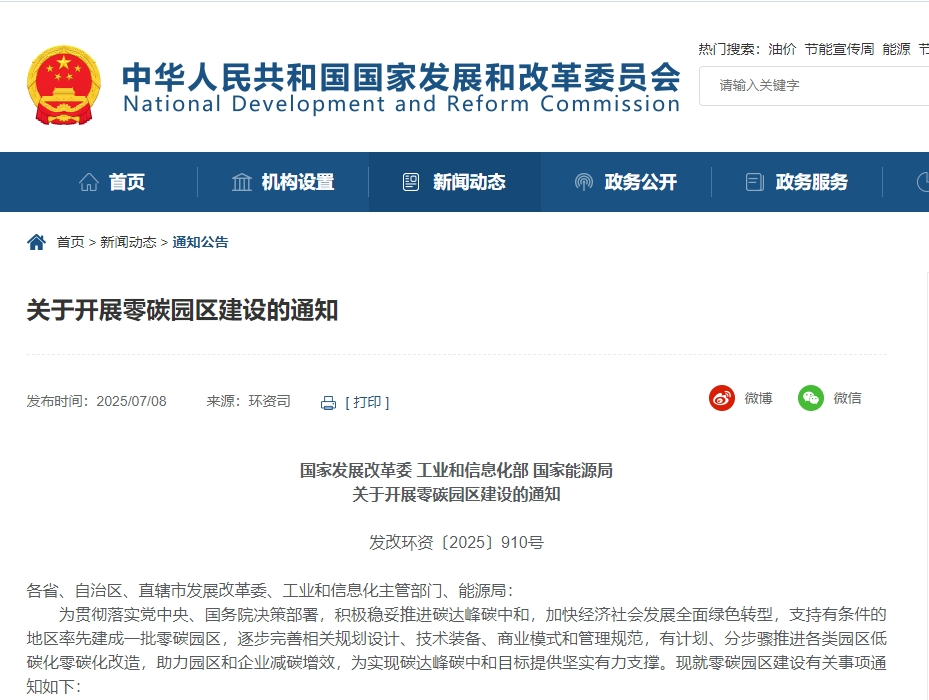Interpretation of New Zero-Carbon Park Regulations: Petrochemical, Hydrogen, and Other Industries Embrace New Opportunities for Transformation
Recently, the National Development and Reform Commission, the Ministry of Industry and Information Technology, and the National Energy Administration jointly issued the "Notice on the Construction of Zero-Carbon Parks" (hereinafter referred to as the "Notice"). The Notice proposes promoting the low-carbon and zero-carbon transformation of parks through eight key tasks. This policy not only provides a critical lever for achieving the goals of carbon peaking and carbon neutrality but also has profound implications for key industries such as petrochemicals and hydrogen energy.

Image / Notice on the Construction of a Zero-Carbon Park
1. Petrochemical Industry: Accelerating Green Transformation and Urgent Need for Technological Upgrades
(1). Requirements for Industrial Structure Adjustment
The "Notice" explicitly promotes the transfer of high-energy-consuming industries to regions rich in energy resources. It requires the petrochemical sector to optimize regional layouts and develop low-energy-consumption, high value-added products.
(2). Key Focus of Low-Carbon Technology Application
The policy emphasizes clean energy substitution solutions such as direct green electricity supply and biomass energy utilization, while also requiring improvements in energy efficiency, promoting the construction of "extreme efficiency factories."
(3). Pathways for Circular Economy Development
By improving the resource recycling network within industrial parks, the efficient utilization of petrochemical by-products is promoted, aiming to build an industrial symbiotic system.
2. Hydrogen Energy Industry: Expansion of Application Scenarios and Full Release of Policy Benefits
As a core supporting technology for zero-carbon industrial parks, hydrogen energy is poised for significant development opportunities. The "Notice" explicitly mentions hydrogen energy in several tasks:
(1). Explore modes of hydrogen-electricity coupled development and utilization, promoting the integration of green hydrogen production with energy storage and industrial energy use.
(2). Encourage the replacement of fossil fuels and raw materials, expanding the application scenarios of hydrogen energy in fields such as chemical and metallurgical industries.
(3). Support the construction of multi-energy complementary systems in industrial parks, providing practical implementation spaces for hydrogen-powered transportation and distributed energy.
(4). Implement safeguard measures such as a "one-stop" approval window and medium- to long-term credit support to reduce the costs of hydrogen energy project implementation.
It is foreseeable that zero-carbon parks will become key platforms for the transition of hydrogen technology from demonstration to large-scale application, driving rapid growth across the industry chain, including electrolyzers, storage and transportation equipment, and fuel cells.
The construction of zero-carbon industrial parks is not only a key measure to achieve the 'dual carbon' goals but also provides enterprises with new opportunities for low-carbon development. Through a combination of policy guidance, technological innovation, and market mechanisms, these parks will become testing grounds and growth poles for green industrial transformation. In the future, as pilot experiences accumulate, the zero-carbon model is expected to be promoted nationwide, driving China's industry towards a new stage of high-quality development.
